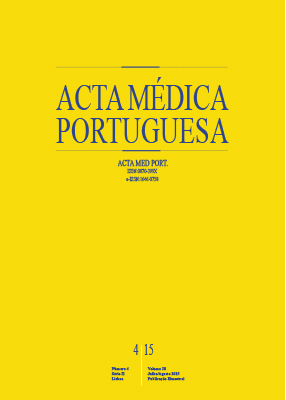Spontaneous Non Ischaemic Blue Finger: A Rare and Benign Phenomenon
DOI:
https://doi.org/10.20344/amp.5867Keywords:
Fingers, Ischemia, Pigmentation Disorders.Abstract
The spontaneous non-ischaemic blue finger is a rare and benign disorder, characterized by purple discoloration of a finger, with complete resolution. This article reports the case of a woman of 88 years, which after a few hours of stay in the emergency department developed without associated trauma, a purplish color of the 3rd finger of the right hand, with a palpable pulse and without temperature changes or pain. The etiological investigation was negative. The patient was assessed one week after the event and showed completeresolution. There are several diseases that share the same signs and symptoms, as such the diagnosis is based on the spontaneous violaceous color sparing the finger tip, and fast resolution without treatment. Though being a harmless phenomenon, it requires early assessment for timely differential diagnosis with severe pathologies.
Downloads
Downloads
Published
How to Cite
Issue
Section
License
All the articles published in the AMP are open access and comply with the requirements of funding agencies or academic institutions. The AMP is governed by the terms of the Creative Commons ‘Attribution – Non-Commercial Use - (CC-BY-NC)’ license, regarding the use by third parties.
It is the author’s responsibility to obtain approval for the reproduction of figures, tables, etc. from other publications.
Upon acceptance of an article for publication, the authors will be asked to complete the ICMJE “Copyright Liability and Copyright Sharing Statement “(http://www.actamedicaportuguesa.com/info/AMP-NormasPublicacao.pdf) and the “Declaration of Potential Conflicts of Interest” (http:// www.icmje.org/conflicts-of-interest). An e-mail will be sent to the corresponding author to acknowledge receipt of the manuscript.
After publication, the authors are authorised to make their articles available in repositories of their institutions of origin, as long as they always mention where they were published and according to the Creative Commons license.









